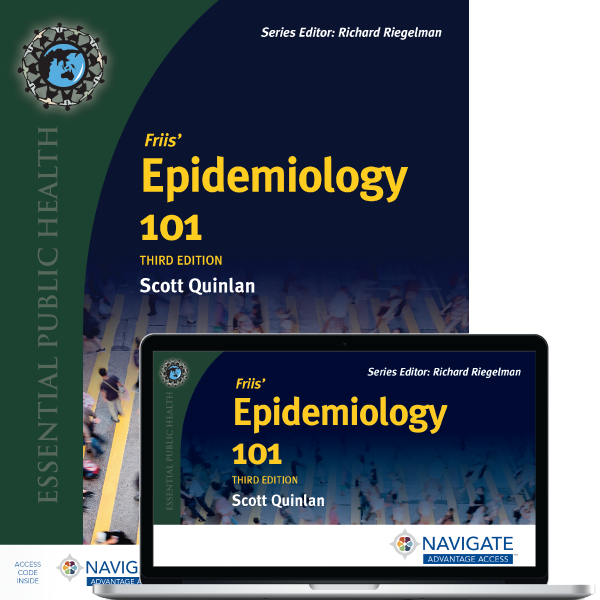Epidemiology is All Around Us: Engaging Undergraduate Students in This Increasingly Popular Area of Study

Teaching epidemiology to undergraduate students is an excellent opportunity to introduce the discipline to the next generation of public health researchers and leaders. I have found that undergraduate students are a highly motivated group and come to the course with a diverse set of backgrounds and experiences.
They do at times approach epidemiology with some trepidation due to concerns about the quantitative aspects of the course. One way that I have successfully overcome this reluctance is to demonstrate epidemiologic concepts using examples that are relevant and timely. This often involves tying recent events or news articles to the concepts we are learning. Read on to learn how I conduct my epidemiology courses to keep students engaged.
Cite Real-World Examples
I begin each class session with a recent news headline or current event that in some way ties into what we have learned recently or are about to learn. There are many options to choose from and this activity helps students to see how what they are learning can be applied directly to better understand the world around them.
This can also lead to some fun discussions about the limitations of translating epidemiologic research into the popular press. By using this approach, I have found that students can better overcome their concerns about the quantitative aspects of the course and instead focus on core concepts and applications.
The COVID-19 pandemic and aftermath provided a plethora of opportunities to show students epidemiology in action. From the earliest stages of the pandemic, surveillance strategies were of paramount importance and allowed for a robust discussion about the strengths and weaknesses of different approaches. Wastewater surveillance was a particularly interesting topic as this could be tied to surveillance for other diseases including polio. As we learned more about the virus that causes COVID-19, it opened the door to discussion of the way that different characteristics of infectious agents impact prevention activities. Concepts such as infectivity and pathogenicity were easier to understand when coupled with changes being implemented such as masking requirements once it was recognized that a significant proportion of infections could be asymptomatic.
Bring the Data to Life
Epidemiology students sometimes become overwhelmed with all the different measures of morbidity and mortality that are introduced. However, seeing these measures in action can help to see their relevance. Exploring and discussing such topics as the prevalence of online grocery shopping allows them to see the use of these measures in familiar context. Undergraduate students are often dedicated to addressing health disparities and exploring social determinants of health. Pointing out the role of these measures in identifying and describing these inequities, such as infant mortality rates and maternal mortality rates, can be the starting point for a fruitful discussion.
Understanding causation is particularly challenging for all epidemiology students, especially when addressing the sufficient component cause model. One relevant discussion regarding this topic revolved around the risks of infection associated with handling delivered packages, something that is relatable to all. We discussed the many “components” that would need to come together for infection to be transmitted in this way and this helped to put the risk in perspective. Despite the many opportunities offered by the COVID-19 pandemic, students admitted to experiencing “COVID-19 fatigue”, so providing examples that were not related to COVID-19 is also important.
Outbreak investigation is one of the aspects of epidemiology that students find most enjoyable. Relevant examples abound, such as the lead and chromium poisoning outbreak that was linked to applesauce pouches. This outbreak was well chronicled in the news and provided opportunities to consider food safety surveillance, as well as the importance of well-planned investigations. Discussions of strong case-definitions and identification of suspected exposures linked to this outbreak allowed students to understand one of the key uses of epidemiology without being bogged down in the minutia of formulas and numbers. Students also appreciated seeing an application of epidemiology outside of communicable disease.

Teach Epidemiology Students How to Evaluate
Introducing and discussing epidemiologic study designs is another opportunity to reference recent news and current events to aid student understanding and engagement. Rarely does a day go by when there is not one or more news articles highlighting the recent results of an epidemiologic study. Finding studies that address common lifestyle factors such as sleep, coffee consumption, artificially sweetened beverages, and exercise help students to see the relevance of these studies to their everyday lives and are the starting point for a robust discussion of study design elements. The increasing recognition of the role of sleep on overall health has led to numerous studies in this area for exploration.
Students gain appreciation for the challenges in designing strong observational research. Defining and measuring sleep quality and duration initiates a discussion of different methodologies such as the use of sleep journals and more technological approaches such as the use of smartwatches. Students seem particularly interested in considering the strengths and weaknesses of these different approaches and how they might impact study results and how they are communicated.
An area that can sometimes be confusing for students is distinguishing between relative and absolute measures of effect, particularly when interpreting study results. Examples abound of recent news headlines touting a relative change in health risk linked to a certain exposure, such as cat ownership during childhood and a doubling of the risk of schizophrenia or ADHD being linked to a tripling of dementia risk later in life. Using these examples encourages students to dig deeper into the study results to understand what this means in absolute terms, which helps them maintain perspective and context.
A useful analogy when distinguishing between relative and absolute measures is using a coupon while shopping, an experience to which we can all relate. For example, a 50 percent discount is a relative measure and students need to think about what they are purchasing to get a sense of the absolute effect. The value of this coupon when purchasing a cup of coffee versus a new smartphone clearly shows that the same relative change can have vastly different absolute impacts.
Address the Confusion with Confounding
The concept of confounding is particularly challenging to students of epidemiology. In my experience much of the confusion with confounding stems from getting bogged down in the technical aspects of this concept. It becomes easier for students to grasp when it is recognized that concept of confounding is not new but instead something that comes up regularly when considering what makes us healthy.
A good discussion topic related to this is the use of multivitamins and recent news articles discussing the benefits (or lack thereof) are plentiful. Showing students that one of the challenges of establishing the benefits of multivitamin use is the large differences in characteristics between regular multivitamin users and nonusers. In so doing, students get to see confounding in action. This discussion can also expand into the differences between observational studies and randomized trials and why they sometimes have conflicting results. Other fun discussion topics related to confounding and how it impacts results are the health benefits of dog ownership, with several observational studies showing a clear link but with concerns about potential confounding.
Epidemiology offers students a wealth of opportunities for an exciting and rewarding career. Using recent events and news articles helps students see beyond the numbers and focus on how epidemiology impacts their everyday lives. This approach emphasizes that epidemiology isn’t just about numbers and statistics, but instead it is about understanding patterns, identifying risk factors, and making informed decisions to improve health.
Friis' Epidemiology 101, Third Edition
Friis' Epidemiology 101, Third Edition is a clear and accessible resource designed to provide students with a solid foundation in basic epidemiologic concepts while also demonstrating how these concepts can be applied to problems in everyday life.
Request Your Review CopyRelated Content:
About the Author:
Scott C. Quinlan, PhD is an Associate Teaching Professor in the Department of Epidemiology at The George Washington University. He has many years of experience teaching a range of graduate and undergraduate courses in epidemiology and biostatistics, both in the on-campus and online environment. He received his BS in biochemistry from the University of Delaware and his MS and PhD in Epidemiology from The George Washington University. His dissertation research involved an examination of the role of infections in cancer development. Dr. Quinlan has enjoyed a varied career in epidemiology, with experience serving as an epidemiologist in industry, academic, and government settings. He has experience working in international clinical trials research as well as designing, conducting, and analyzing epidemiologic studies related to drug and vaccine safety. Dr. Quinlan has taught courses in introductory epidemiology and biostatistics, advanced data analysis methods for public health, and the epidemiology of drug and vaccine safety.
